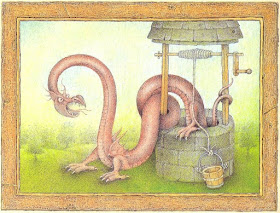From Wikipedia:
Knucker is a dialect word for a kind of water dragon, living in knuckerholes in Sussex, England. The word comes from the Old English nicor which means "water monster" and is used in the poem Beowulf.
From Wikipedia:
Naga, (Sanskrit: “serpent”) in Hinduism, Buddhism, and Jainism, a member of a class of mythical semidivine beings, half human and half cobra. They are a strong, handsome species who can assume either wholly human or wholly serpentine form and are potentially dangerous but often beneficial to humans.
The mythological serpent race that took form as cobras often can be found in Hindu iconography. The nāgas are described as the powerful, splendid, wonderful and proud semidivine race that can assume their physical form either as human, partial human-serpent or the whole serpent. Their domain is in the enchanted underworld, the underground realm filled with gems, gold and other earthly treasures called Naga-loka or Patala-loka. They are also often associated with bodies of waters — including rivers, lakes, seas, and wells — and are guardians of treasure.[4]




No comments:
Post a Comment